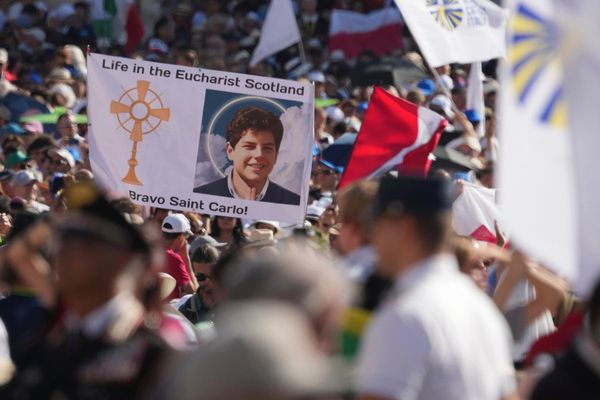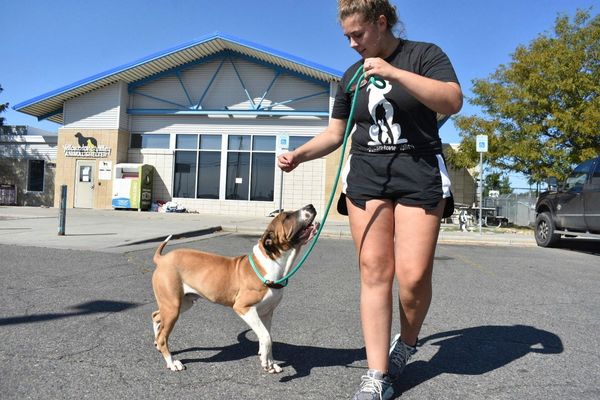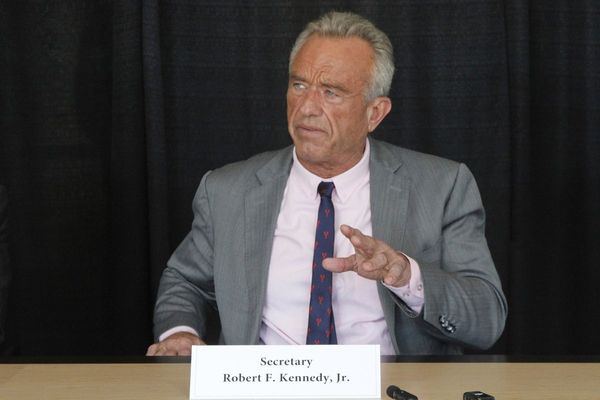
Marcelle Bernstein
Interviewer, 1964-1971
I joined at the beginning, initially as a secretary/researcher. There were few magazines then, and little television, so there weren’t many outlets for advertising, and the colour magazines like us lapped it up. The money was coming out of our ears and what we were doing felt new and exciting.
Often, interviews were casual and unguarded. These huge stars just talked. I spoke to Vanessa Redgrave at her house in Hammersmith, as she was in the midst of relocating. It was total chaos. I spent over a week with Elizabeth Frink on her French farm. I met Dusty Springfield at a working men’s club in the Midlands. Agatha Christie made me tea at her Bolton home. For one interview, I went down to Devon to meet Jean Rhys, and she opened up about her love affairs.
Jane Bown
Photographer, 1959-2014
From 1949 and into the 21st century, photographer Jane Bown was an Observer legend, contributing regularly to the magazine. In a piece from 1980 celebrating her work, Robert Chesshyre recounted a story that illustrated Jane’s eye for a great picture and extraordinary luck. ‘In 1968, Jane Bown and Observer writer John Gale went to cover a society wedding in Kent. Outside the church all was confusion: sightseers, reporters and photographers falling over each other and only very standard shots of arriving celebrities to be had. Jane turned to Gale and said: “Johnny, let’s go to the pub.”
‘As they got there a Rolls-Royce drew up and out stepped Noël Coward, Richard Burton and Elizabeth Taylor. ‘I couldn’t believe my eyes. I still don’t know what made me go to the pub.’
The next day, when every Sunday paper was carrying standard pictures, the Observer had three of the best-known faces in the land (below) heading for a surreptitious stiff-one to see them through the ceremony.
Nigel Slater
Cookery writer, 1993-present
It is extraordinary to think I have been at the magazine for half of its 60 years. I remember being asked to contribute my first column and, after much consideration, decided the best approach was simply to write about what had been on my table that week – the dishes I had been making in my own kitchen at home. The recipes were for grilled peppers and stewed damsons, recipes that have, incidentally, been on my table this very week, 30 years on.
The column has always been a diary of sorts, the act of passing on a recipe or two to others, straightforward cooking that, I hope, brings comfort and pleasure.
There has been the odd cock-up (the shortbread without flour, the Christmas pudding without sugar and the tart whose filling poured on to the plate), but I like to think that rather than trying to reinvent the wheel, I have generally managed to bring something delicious to the table. A little bit of joy for readers to come home to.
Harry Borden
Photographer, 1994-present
I always felt the Observer Magazine was a publication for photographers. Its fiercest competition felt establishment, whereas it was a space to experiment that took a chance on new, fresh talent. And it was visual – pictures took centre stage.
I’d dart from shoot to shoot. The work came fast: In one week alone, I was in Las Vegas with the Spice Girls, LA with Frank Stella, then on to the east coast to Barry Manilow and then Joseph Heller, all for this magazine. That Spice Girls image is in the National Portrait Gallery now.
There were plenty of highlights: one is the image of Michael Hutchence taken on the Champs-Elysees in 1997. I spent a week following him. We went to a nightclub. While I was out on the balcony having a smoke, he popped out from a TV interview. I managed to photograph him. It’s one of these which has become really famous. At the time, we almost disregarded it on the contact sheet, opting for another portrait for the cover.
Justine Picardie
Editor, 1996-1999
In 1996, my sister Ruth (pictured, below) was diagnosed with breast cancer at the age of 32, when her twin babies had just turned one. I was then the editor of the Observer Magazine, and Ruth had already made a name for herself as a bold young journalist at the Guardian and the Independent. She had always expressed herself freely – and from childhood onwards, we had written for each other, in long letters and shared chronicles. So it felt entirely natural for Ruth to ask me if I would publish a series of her columns about the experience of facing death, when she still had so much to live for.
We called her column ‘Before I Say Goodbye’, and from the very beginning, it received an immense response from readers. This was an era before emails and thousands of letters flooded into the office, as people wrote to say how moved they were and shared their own stories of love and loss. Ruth’s writing transcended her particularly savage circumstances, to speak of a wider truth about the joy of living, even in the shadow of death. And when I re-read Ruth’s columns now, her voice is still so alive – still resonating across the years, as if she were right beside me. She died on 22 September 1997, less than a year after her diagnosis. But for me, and her legions of readers, Ruth lives on in her words, always with me, never forgotten…
Tony Mullins
Art department, 1964-1980
I joined the Observer Magazine ahead of its first issue, as its assistant art editor, at first, just doing as I was told, for a salary of £1,850 per annum. It wasn’t a particularly large team. Within a few years, I became art editor.
Everything was done by hand to construct the layouts. There was a weekly showing, where we’d present the proposed magazine to the editor. This involved photocopying pages of fonts from various sources, then cutting and pasting individual letters to make up a headline or two… Real dark ages stuff. It would be picked to pieces, then sent down to the printers once we’d got the green-light.
There are too many covers to pick from that I’m proud of. But a story from 1967 that stands out featured a bride in a dustbin (above), and asked: ‘Are we the last married generation?
Don McCullin
Photographer, 1964-1992
The magazine was new when I started to work for it. My first story, I believe, saw me sent to Dartmoor Prison, home to some of Britain’s most notorious criminals. The piece was about the prison itself. Unique, really, for the Home Office to allow journalists in.
The governor was very charming, and showed me around. He knocked on the door of a cell, and introduced me to the inmate. ‘Do come in, Gov,’ the prisoner said, ‘I do take the Observer.’ After we left, the governor said: ‘Don’t believe a word he says, he’s in here for fraud.’ Later, I came across a boy I went to school with. We nodded at each other and carried on. It wasn’t a total shock; boys from my school found themselves locked up all across the UK.
It was one of many stories I worked on during the magazine’s infancy: I photographed Leslie Caron and Rita Tushingham; the war in Yemen – and life on Britain’s fairgrounds.
Stormzy
Guest editor, December 2019
When I said yes to guest-editing this magazine, I didn’t have a specific message in mind, but I knew I wanted it to be a celebration of black British culture. Lots of us know who Idris Elba and Raheem Sterling are. We know the stories of prominent black people. But a lot of Britain doesn’t know that much about black Britishness – that there’s this whole beautiful world to explore.
The issue of the Observer Magazine was an opportunity to show how multifaceted our culture is. And a chance for me to shine a spotlight on people and places on which the spotlight isn’t normally shone. I was super grateful to the Observer Magazine for the opportunity.
This is the Observer saying that me and everything I stand for are important, that black culture is important. In a day and age when people prefer to play it safe, this magazine has said, ‘Nah.’ That’s ballsy! This is an edited extract from Stormzy’s editor’s letter for the Observer Magazine on 13 December 2019.
Monty Don
Gardens writer, 1994-2006
My only authority came from a passion amounting to an obsession for my own garden. The second factor was that it was a regular job. In the previous three years, my business had collapsed, my TV and journalistic work dried right up and I was completely, stony broke. So to be paid to write – which is what I like to do best of all – about the activity that I love more than anything else, was the best of all worlds. From the first I realised that the only way I could do the job was to write about my own garden. In early 1994, it was scarcely more than a ploughed field. We had no spare cash, so everything had to be done by Sarah and myself, and as much was grown from seed or cuttings as possible. With hindsight this was a huge advantage, supplying me with endless ideas to write about. This is an edited extract from Monty’s final column for the Observer Magazine on 28 May 2006.
Special thanks to Stephen Pritchard, John Nuttall-Smith, Sue Arnold, Bob Low, David Mansell and Neil Libbert







